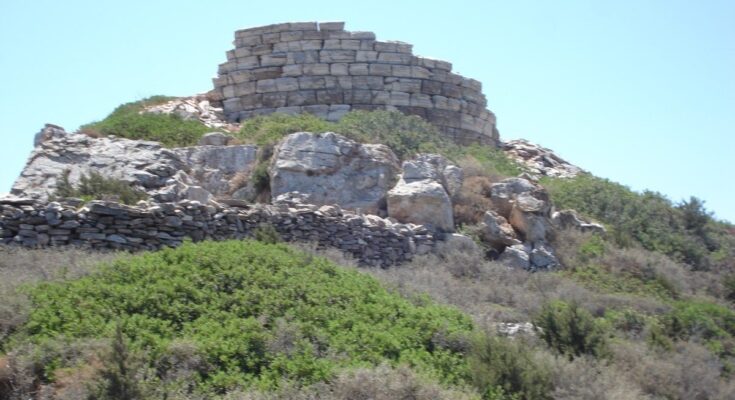A gold heist in ancient Greece on the prosperous island of Sifnos is among the biggest in recorded history.
The Sifnos island raid in 524 BC targeted the famed gold and silver mines of the Greek island. There were many mines on the island but the richest were the mines of today’s Agios Sostis.
According to some accounts, exiles from the island of Samos, located further east in the Aegean, plundered a staggering 100 talents of gold. In today’s terms, that would be worth close to $100 million, highlighting the immense value of gold even back then.
Sifnos was a rich island in ancient Greece due to gold and silver
At the time, Sifnos was among the most prosperous islands in the Cyclades. As Herodotus mentions, it was rich thanks to the gold and silver mines. Sifnos started minting around the year 600 BC, in other words after Aegina and before Athens and Corinth.
The most important and famous piece of Sifnos’ architecture, which proves the glamour and the flourishing economy of the island is the “Thissavros Sifnion” (The Siphnian Treasury), which has been built and dedicated to the sanctuary of Apollo in Delphi by the residents of Sifnos.
It was built in 525 BC and according to Pausanias. It was built from the tithe, which came from the profits of the gold mines of Sifnos.
It was a very beautiful Ionic building. Instead of pillars, its facade had two Caryatids which held the entablature with rich plastic decoration and a frieze decorated with masterly reliefs along the four sides of the treasure of total length of 29.63 cm.
The entire building had remarkable sculptures which were excellent samples of mature archaic plastics. Some of them are exhibited at the Museum of Delphi.
This brilliant building was so impressive that the priests of Delphi’s sanctuary gave to the people of Sifnos special honors for their offer.
The gold heist on Sifnos
However, the golden age of Sifnos did not last long. In 524 BC, Samian fugitives came in peace to Sifnos.They were political opponents of the shrewd tyrant of Samos, Polycrates, and asked the residents of Sifnos to help them economically.
The residents of Sifnos refused, and this led to besieging and pillaging the island. One hundred talents of gold were stolen. This was an enormous amount of wealth.
Sifnos’ economy collapsed and never recovered from the gold heist. Thanks to their resilience, Sifnos residents tried to fend off future invasions by building a network of towers in order to send signals to the ancient citadels, several of which are still standing today.
Later on, the network was developed and the signals exchanging system was spread all over the island. The new communication method, according to Thucydides, must have been fire and smoke.
The towers were later used as protective buildings for women and children and had full agricultural equipment, reservoirs, and storehouses. In contrast, the stronger ones were used to push back the pirates.
Seventy-six ancient towers are situated all over the island. They are all round and were built between the 6th and the 3rd century BC, as proven by the shards of ancient pots found in the areas of the towers, as well as by their size and building type. The findings also prove that the towers had at least two levels with internal separating walls.
Related: The Island of Sifnos, Unassuming Gem of the Western Cyclades



